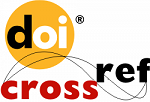Enhancing student learning motivation: Developing an integrated mathematics module with islamic values
Abstract
Background: The teaching of mathematics in Islamic schools has not yet succeeded in attracting and motivating students to learn. The lack of relevant context and meaningful values in the teaching materials can lead to low student motivation. Integrating Islamic values into mathematics learning modules is expected to provide more meaningful, relevant learning experiences and increase students' motivation to learn.
Aim: This study aims to produce a mathematics module integrated with Islamic values to enhance students' learning motivation. The module is designed to meet the criteria of being valid, practical, and effective.
Method: This research employs the Plomp development model, which consists of three stages: preliminary stage, development stage, and assessment stage. The developed module has been validated by experts in content, language, and media.
Result: The implemented module meets the criteria of validity, practicality, and effectiveness. The module is valid with an average score of 88.9%, practical with an average score of 89.7%, and effective in improving students' mathematics learning outcomes, with 86.67% of students achieving mastery. The module also successfully increased students' learning motivation, with 84.50% of students showing improved motivation.
Conclusion: Based on these results, it can be concluded that the mathematics module integrated with Islamic values is valid, practical, and effective.
Keywords
Full Text:
PDFReferences
Arikunto, S. (2021). Dasar-dasar evaluasi pendidikan edisi 3. Bumi aksara.
Bereiter, C., & Scardamalia, M. (2014). Knowledge Building and Knowledge Creation: One Concept, Two Hills to Climb. In S. C. Tan, H. J. So, & J. Yeo (Eds.), Knowledge Creation in Education (pp. 35–52). Springer Singapore. https://doi.org/10.1007/978-981-287-047-6_3
Bruner, J. (1966). Learning about learning, a conference report. https://eric.ed.gov/?id=ED015492
Dini, A., Rahmatan, H., & Nurmaliah, C. (2023). Application of the E-module combined with the Guided Inquiry Learning Model to Increase Student Motivation and Learning Outcomes on the Structure and Function of Plant Tissues. Jurnal Penelitian Pendidikan IPA, 9(6), 4768–4776.
Fadli, M. R., & Sudrajat, A. (2020). History learning module based on islamic values on KH Hasyim Asy’ari’s jihad resolution material. Tadris: Jurnal Keguruan Dan Ilmu Tarbiyah, 5(1), 65-75.
Febrianti, K. V., Bakri, F., & Nasbey, H. (2017). Pengembangan modul digital fisika berbasis discovery learning pada pokok bahasan kinematika gerak lurus. Jurnal Wahana Pendidikan Fisika, 2(2), 18–26.
Freudenthal, H. (2002). The Landscape of Mathematics Education. In Revisiting Mathematics Education (Vol. 9, pp. 125–180). Kluwer Academic Publishers. https://doi.org/10.1007/0-306-47202-3_3
Gunung, I. N., & Darma, I. K. (2019). The effectiveness and constraints of learning in polytechnic education. Jurnal Penelitian Dan Evaluasi Pendidikan, 23(2). https://doi.org/10.21831/pep.v23i2.23526
Hartatik, S., Mariati, P., Nafiah, N., Alfiah, A., & Amin, S. M. (2022). Pengenalan Metode BEBER (Belajar Sambil Bermain) Matematika bagi Guru-Guru Maarif di Surabaya. Indonesia Berdaya, 4(1). https://doi.org/10.47679/ib.2023376
Indah, N., & Hidayati, N. (2021). Analisis Kesulitan Siswa Berdasarkan Kemampuan Pemahaman Konsep Matematis dalam Menyelesaikan Soal Materi SPLDV. Jurnal Cendekia : Jurnal Pendidikan Matematika, 6(1). https://doi.org/10.31004/cendekia.v6i1.981
Iranda, A., & Periantalo, J. (2022). Pengembangan modul pembelajaran berbasis pengajaran positif pada mata kuliah Pengembangan Diri. Mediapsi, 8(2). https://doi.org/10.21776/ub.mps.2022.008.02.839
Ismaniati, C., & Iskhamdhanah, B. (2023). Development of Interactive E-Modules to Increase Learning Motivation and Science Literacy in Elementary School Students. Jurnal Iqra’: Kajian Ilmu Pendidikan, 8(1), 156–173.
Kaharuddin, A., Yusryanto, Y., Hajeniati, N., H, R. A., & Salmawati, S. (2021). Pelatihan Pembuatan Modul Pembelajaran Interaktif Untuk Pembelajaran Jarak Jauh Pada Guru Matematika SMP. Jurnal Warta Desa (JWD), 3(3). https://doi.org/10.29303/jwd.v3i3.148
Kholil, M., & Usriyah, L. (2019). Pengembangan buku ajar matematika terintegrasi nilai-nilai keislaman dalam penanaman karakter siswa madrasah ibtidaiyah. Madrasah: Jurnal Pendidikan Dan Pembelajaran Dasar, 12(1), 52–62.
Kurniati, A. (2015). Mengenalkan matematika terintegrasi islam kepada anak sejak dini. Suska Journal of Mathematics Education, 1(1), 1–8.
Kusuma, L. W., Mastuang, M., & Dewantara, D. (2022). Development of e-modules containing the Quran and hadith to increase student motivation. Berkala Ilmiah Pendidikan Fisika, 10(3), 255–270.
Lourenço, O. (2012). Piaget and Vygotsky: Many resemblances, and a crucial difference. New Ideas in Psychology, 30(3), 281–295.
Lu, X. (2023). Digital Teaching Mode in Higher Vocational Colleges in the Era of Big Data. Education Journal, 6(8). https://doi.org/10.31058/j.edu.2023.68030
Nafiah, U. (2020). Developing English modules with integrated Islamic values and the Jambi local wisdom. Studies in English Language and Education, 7(1), 96-112.
Ndoa, Y. A. A., & Jumadi, J. (2022). Increasing Learning Motivation Through the Application of Physics E-Module Based on Flipped Learning. Jurnal Penelitian Pendidikan IPA, 8(3), 1223–1230.
Nugraha, D. A., & Binadja, A. (2013). Pengembangan bahan ajar reaksi redoks bervisi SETS, berorientasi konstruktivistik. Journal of Innovative Science Education, 2(1). https://journal.unnes.ac.id/sju/jise/article/view/1289
Nurrita, T. (2018a). Pengembangan media pembelajaran untuk meningkatkan hasil belajar siswa. Jurnal Misykat, 3(1), 171–187.
Nurrita, T. (2018b). Pengembangan media pembelajaran untuk meningkatkan hasil belajar siswa. Jurnal Misykat, 3(1), 171–187.
Piaget, J. (1976). Piaget’s Theory. In B. Inhelder, H. H. Chipman, & C. Zwingmann (Eds.), Piaget and His School (pp. 11–23). Springer Berlin Heidelberg. https://doi.org/10.1007/978-3-642-46323-5_2
Plomp, T. (2013). Educational design research: An introduction. Educational Design Research, 11–50.
Prastowo, A. (2019). Panduan kreatif membuat bahan ajar inovatif menciptakan metode pembelajaran yang menarik dan menyenangkan.
Rojii, M., Istikomah, I., Aulina, C. N., & Fauji, I. (2019). Desain Kurikulum Sekolah Islam Terpadu (Studi Kasus di SMPIT Insan Kamil Sidoarjo). Al-Tanzim: Jurnal Manajemen Pendidikan Islam, 3(2), 49–60.
Shu, J. (2022). A POA Theory-based Network Teaching Mode for English Course in Higher Vocational College. International Journal of Emerging Technologies in Learning (iJET), 17(01). https://doi.org/10.3991/ijet.v17i01.28459
Sugiyono, S. (2011). Metode Penelitian Pendidikan (Pendekatan Kuantitatif, Kualitatif, dan R&D).
Xue, L. (2020). Research and Practice of College English Teaching Based on Production-Oriented Approach. Proceedings of the 2020 5th International Conference on Humanities Science and Society Development (ICHSSD 2020). https://doi.org/10.2991/assehr.k.200727.108
DOI: http://dx.doi.org/10.24042/ajpm.v15i1.21980
Refbacks
- There are currently no refbacks.
Indexed by:

Al-Jabar : Jurnal Pendidikan Matematika is licensed under a Creative Commons Attribution-ShareAlike 4.0 International License.







